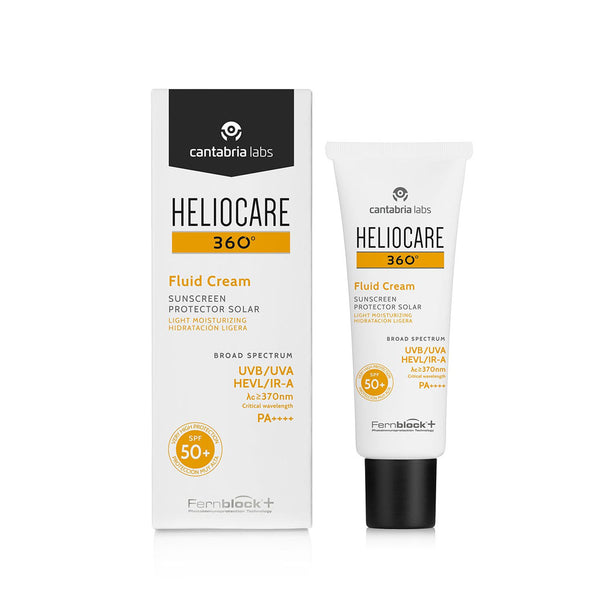Marine Safe Sunscreens: Why Some SPFs Are Bad For Marine Life

We all know the importance of sunscreen. A year-round daily essential, it protects the skin from harmful UV rays that cause premature ageing, skin damage, and even cancer. But did you realise that chemicals in the products you use to keep your skin safe could be damaging essential ecosystems in our oceans? Two of the main offenders, oxybenzone and octinoxate are found in over 3,500 sun protection products and it’s becoming increasingly evident that a number of other chemicals commonly found in sunscreen are also incredibly toxic to marine life and coral reefs.
Each year, 14,000 tons of sunscreen enters our oceans, washed off our bodies when we swim or shower. The consequence? Coral reefs are shrinking at an alarming rate; The Caribbean has already lost at least 80% of its coral reefs. To put it in perspective, 25% of all marine life live in or depend upon coral reefs. Such is the damage caused that several countries and states, including Hawaii, Key West, US Virgin Islands, and Bonaire, have banned sunscreens containing chemicals that harm the inhabitants of our seas.
How do sunscreens harm marine life?
A number of chemicals found in sunscreen have been shown to wreak havoc in our oceans. In particular, research has shown that oxybenzone and octinoxate, two of the most popular ingredients in sun protection products, are immensely toxic to coral reefs. The chemicals kill baby coral and bleach adult reefs by causing them to expel the algae that usually lives inside them, making them more susceptible to disease and death.
Destruction of coral reefs impacts over a million species of marine life, many of which also suffer physically, and sometimes fatally, as a result of sunscreen pollution. Harmful chemicals found in sun protection products can damage the immune and reproductive systems of sea urchins, decrease fertility in fish, cause defects in young mussels, accumulate in the tissue of dolphins, and impair the growth of green algae.
Which sunscreen chemicals harm marine life?
A number of sunscreen ingredients are linked to ecotoxicity and should be avoided. These include:
- Oxybenzone
- Octinoxate
- Octocrylene
- Avobenzone
- Homosalate
- Octisalate
- 3-Benzylidene camphor
- 4-Methylbenzylidene
- Octocrylene
- Benzophenone-1
- Benzophenone-8
- OD-PABA
Is mineral sunscreen safe for marine life?
In general yes, mineral sunscreens tend to be non-toxic to marine life. Unlike chemical sunscreens, which work by absorbing UV light before it reaches your skin, mineral sunscreens use particles of titanium dioxide and zinc oxide to physically block sunlight from hitting the skin.
However, some mineral sunscreens contain nano-particles that are small enough to be ingested by marine life and are harmful to a number of species. To protect the seas, avoid any sunscreen that contains nano-zinc oxide, nano-titanium dioxide, or any other nano ingredient.
How do I pick a marine-safe sunscreen?
To ensure you’ve picked a marine life friendly sunscreen, choose non-nano mineral-based products.
5 of the best marine-safe sunscreens
1. Hello Sunday The One For Your Body SPF 30 Body Lotion
With a non-nano antioxidant-rich mineral formula, Colorescience Sunforgettable Total Protection Face Shield SPF 50 provides total protection and lightweight coverage with a universal tint that suits all skin tones. The marine friendly sunscreen is formulated with phytomoist to provide extreme hydration, along with niacinamide and bisabolol to calm, soothe, and support the skin barrier. The oil-free protection shields skin from the damaging effects of UV rays, pollution, high energy visible (HEV) blue light, and infrared radiation (IR).

2. Heliocare 360 Fluid Cream SPF 50+
Ideal for dry and mature skin, Heliocare 360 Fluid Cream SPF 50+ features an advanced hydration system that leaves skin feeling soft and looking dewy. Formulated with antioxidant Fernblock, to safeguard skin health, the marine-safe sunscreen is an ultra-smooth, rapidly absorbed gel that protects the skin from UV, infra-red, and high energy visible light.

3. Saltee SPF50 Face Daily Protection Formula
Combining skincare and suncare, Saltee SPF50 Face Daily Protection Formula is a lightweight daily moisturiser that provides UVA, UVB, and infrared protection. The vegan and marine-life friendly sunscreen is formulated with Avocado Oil to revitalise and replenish the skin, Neroli Oil to rejuvenate and boost the natural regeneration of skin cells, Nordic Pine Bark to combat hyper-pigmentation, and panthenol to attract and retain moisture.

4. Avène Very High Protection Mineral Fluid SPF50+ Sun Cream
With a light, matte‐finish fluid formulated using only mineral based filters, this SPF provides optimum protection for even sensitive skin. The next generation mineral based complex provides broad spectrum defence from UVA and UVB rays, whilst remaining very water‐resistant and photostable.

5. Medik8 Advanced Day Ultimate Protect SPF 50+
Formulated with DNA repair enzymes and an advanced environmental shield, Medik8 Advanced Day Ultimate Protect SPF 50+ is both a daily use moisturiser and an extremely high protection sunscreen, safe for ocean life. The non-greasy hydrating cream protects against free radical damage, reduces the appearance of fine lines and wrinkles, and uses light-activated repair technology to support skin recovery.

Fancy sticking around to read another post? Discover the new(ish) concept in town as we discuss what the 'skinification of hair' is, and how you can try it out at home.
















